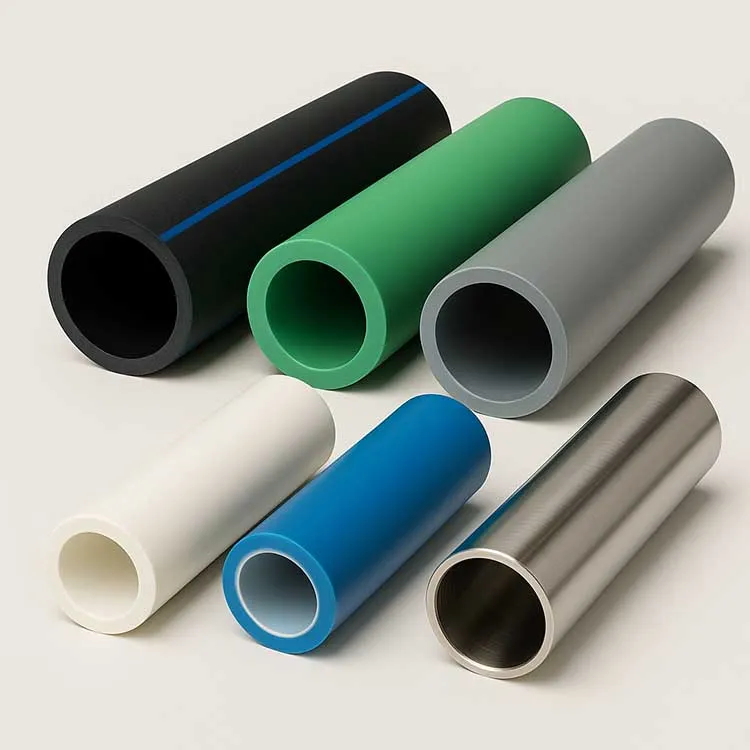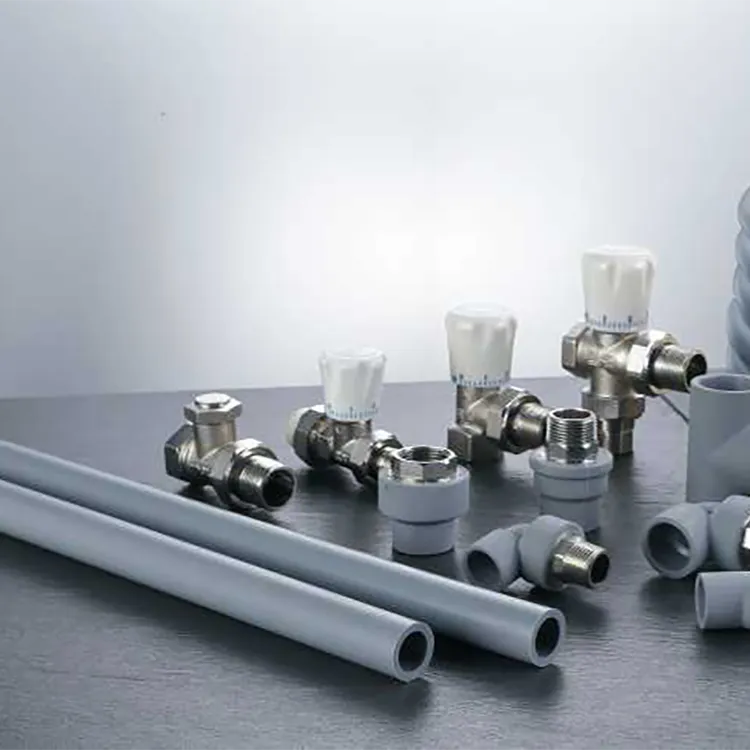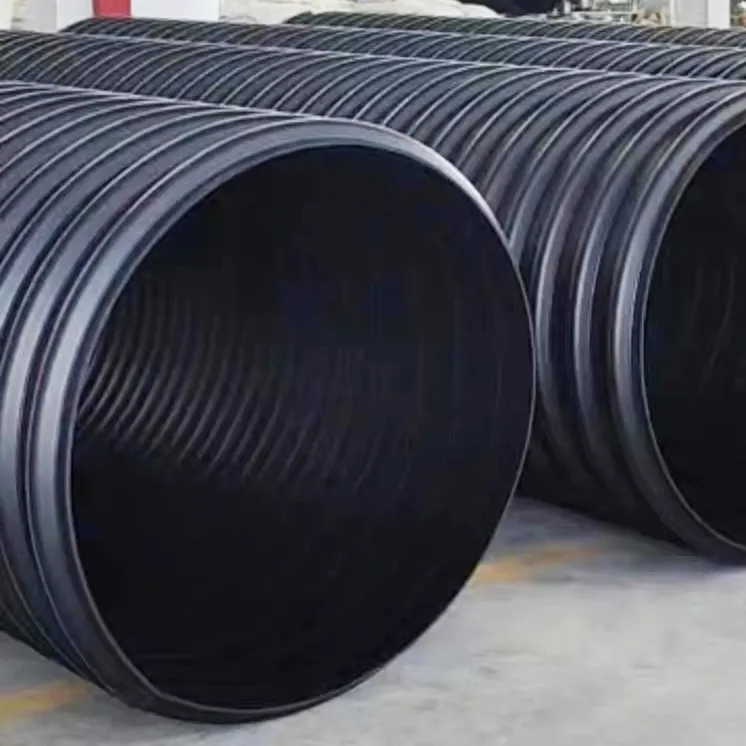We all know that the water supply pipe is for water supply while the drainage pipe is for drainage. The uses of the two are different. The drainage pipe is mainly used for drainage inside the community, while the water supply pipe can be used for irrigation of farmland. In addition, the pressure that the drain pipe can bear is relatively small; the pressure that the water supply pipe can bear is relatively large. These all determine the different requirements for the selection of water supply pipes and drainage pipes. Moreover, different use environments also determine the different materials for the selection of water supply pipes and drainage pipes. The specific problems are analyzed in detail. Below, we will analyze them according to different use environments and use purposes.
1. Outdoor water supply pipes
(1) Reinforced concrete pipe.
This type of pipe is corrosion-resistant and more pungent, but it is inconvenient to construct and install.
(2) Gray cast iron pipe.
This type of pipe has good corrosion resistance, but it is relatively brittle and its pressure bearing capacity is not high.
(3) Steel pipes.
There are two types of spiral seam steel pipes and seamless steel pipes. These types of pipes have high pressure bearing capacity, good mechanical properties, and are easy to connect and construct, but have poor corrosion resistance.
(4) Ductile iron water supply pipe.
The strength and stiffness of the pipe are very good, the corrosion resistance of the pipe is good, the construction and installation of the pipe are not difficult, but the price is high.
(5) Rigid polyvinyl chloride (PVC-U) water supply pipe.
PVC-U water supply pipe is light, easy to construct, saves energy, and has good corrosion resistance. The mechanical properties of the pipe are worse than those of steel pipes and ductile iron pipes. Poor push-pull performance.

(6) High-density polyethylene (HDPE) pipe.
A new type of environmentally friendly building material, the pipe has good push-pull resistance, shear resistance and corrosion resistance. But this tube cannot withstand high pressure. The maximum working pressure of PE100 water supply pipe is 1.6MPa.

2. Water supply pipes in the building
(1). Drinking water pipes.
Drinking water pipes include: rigid polyvinyl chloride (PVC-U) water supply pipe, water supply polyethylene pe pipe, random copolymer polypropylene PP-R pipe, cross-linked polyethylene (PE-X) pipe, water supply thin-walled copper pipe , water supply thin-walled stainless steel pipe, steel-plastic (plastic-lined, plastic-coated) composite pipe, etc. These pipes have their own advantages and disadvantages, but the comprehensive performance is better: PE water supply pipe, PP-R water supply pipe and thin-walled copper pipe.
(2). The domestic hot water pipe can be made of heat-resistant polyethylene pipe, heat-resistant PP-R pipe, thin-walled copper pipe and thin-walled stainless steel pipe.
(3). For production and fire-fighting water supply pipes, if the pressure is not high (P≤1.0MPa), galvanized steel pipes can be used, and if the pressure is high (P>1.0MPa), seamless steel pipes can be used.
3. Outdoor drainage pipes
(1) Concrete pipe.
This is the tube that has been used for dozens of times. Practice has proved that in cities and towns, this kind of pipe has many shortcomings:
1) The sealing performance of the pipe is not good, and the interface is easy to seep water, resulting in leakage of sewage and pollution.
2) The shear resistance of the pipe is poor, especially in the city where there are many people and vehicles, and the drainage pipes are located on both sides of the road, and the pipes will break within a few years, especially on both sides of the urban main road with a buried depth of less than 1.0m, this phenomenon is very common.
(2) Rigid polyvinyl chloride (PVC-U) double-wall corrugated pipe.
This is a pipe that was only used in the 1990s. The anti-corrosion performance of the pipe and the sealing performance of the joint are good, the construction is simple, and the cost is low. The mechanical properties of this pipe are not good and the compressive performance is average. Pipes can only be used in branch pipes and places with few vehicles.
(3) Rigid polyvinyl chloride (PVC-U) pipe for buried sewage is a pipe specially used for buried sewage.
The comprehensive performance is second only to polyethylene double-wall corrugated pipe.
(4) High-density polyethylene HDPE double-wall corrugated pipe.
HDPE double-wall corrugated pipe is a new type of pipe that has been put into use in recent years. It has many advantages such as good sealing performance, good compressive performance and good corrosion resistance, and is also the most popular pipe material at present.

High-density polyethylene (HDPE) double-wall corrugated pipe is a new type of pipe with a ring-shaped outer wall and a smooth inner wall. It was first successfully developed in Germany in the early 1980s. After more than ten years of development and improvement, it has developed from a single variety to a complete product series. It is very mature in production process and use technology. Due to its excellent performance and relatively economical cost, it has been greatly promoted and applied in developed countries such as Europe and the United States. In China, the promotion and application of HDPE double-wall corrugated pipes are on the rise, and all technical indicators have reached the standard of use. The color of the inner wall of the double-wall corrugated pipe is usually blue and black, and some brands will use the inner wall of yellow.
4. Drainage pipes in the building
Drainage in buildings has been proven by decades of practice: rigid polyvinyl chloride PVC-U drainage pipes and flexible interface drainage cast iron pipes are more popular drainage pipes.
The above summarizes the use of various types of water supply and drainage pipes currently used in the world. The editor reminds you to pay attention to the "three bases" when choosing, according to the local situation; according to the nature of the project; according to the technical strength and economic situation of the construction personnel to make a comprehensive comparison and analysis; so that everyone can make a more reasonable decision, to ensure the smooth completion of the project.



981.webp)

 (1)379.webp)

294.webp)
476.webp)
420.webp)
146.webp)
460.webp)
287.webp)
274.webp)
688.webp)


